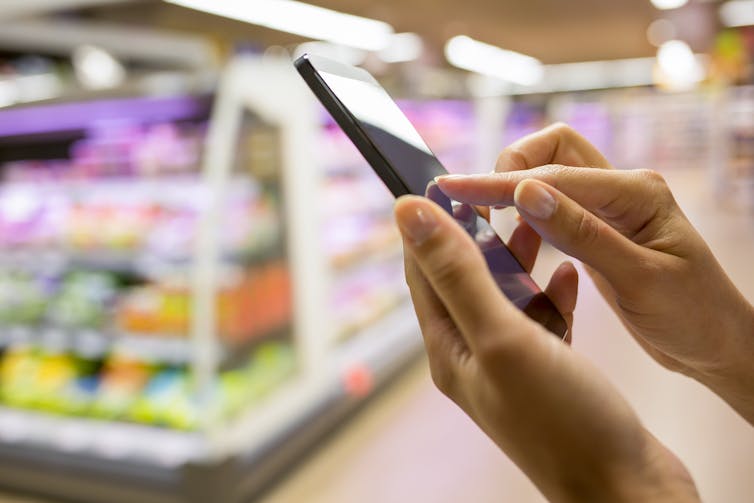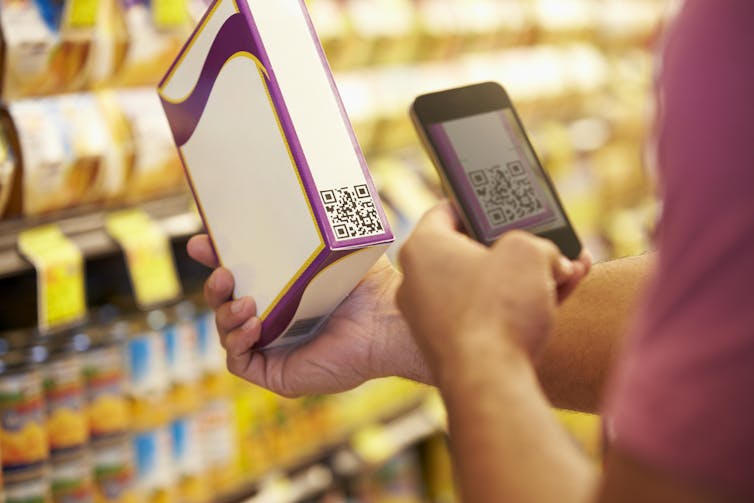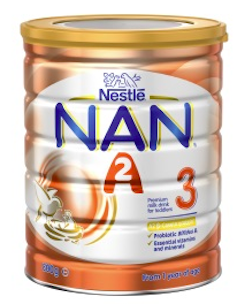Blockchains can trace foods from farm to plate, but the industry is still behind the curve

App-etising? LDprod
Courtesy of Michael Rogerson, University of Bath and Glenn Parry, University of Surrey
Food supply chains were vulnerable long before the coronavirus pandemic. Recent scandals have ranged from modern slavery in Vietnamese fisheries to the persistent problem of child labour in the cocoa industry. Perhaps the most well known fraud was the UK’s horsemeat scandal of 2013, where up to 60% of products labelled as beef were actually horse.
UK supermarkets have also been found selling contaminated chicken on numerous occasions, while a longstanding issue of romaine lettuce in the US causing E coli only recently ended. Such scandals have made the public much more interested in the food supply chain, not to mention the impact of food production on the environment.
Food manufacturers can give consumers detailed information on where our foods have come from using blockchains – the tamper-proof online technology for logging information that is the basis of cryptocurrencies like bitcoin. Some manufactures are doing this, but many have been slow to adopt this technology for various reasons. There are suggestions that coronavirus could be the gamechanger – but will it be?
Block power
Certain jurisdictions such as the EU now require that food products be traceable to source. In the absence of blockchains, the most common way of doing this has been to use digital tagging systems such as RFID (radio frequency identification) or QR (quick response) codes. They enable vendor firms to know where products have been and when, but they don’t let them see what actually happens at each node in a supply chain. As a result, consumers receive little information about their food beyond nutritional content and the country of production.
QR tagging in action. Monkey Business Images
This points to a competitive advantage for manufacturers offering richer and more reliable information to vendors and consumers, which is why some have been combining digital tagging with blockchains. Firms like Wal-Mart have been conducting high-profile trials that have reduced to a matter of seconds the time it takes to trace a product’s origin. Yet they have been reticent to share most of the results.
This has made it harder for the industry to learn, which has not helped this technology to move forward. To this end, we’ve just published some new research that looks at some blockchain trials by some other players in this space.
One case study comes on the back of various Chinese infant formula scandals beginning in 2008 that killed at least 18 babies, affected 300,000 and destroyed confidence in a product that many parents relied upon. The culprit was a chemical called melanine, but it was difficult to ascertain where in the supply chain it was being added to the formula.
To reassure parents, Nestlé hired Shanghai-based blockchain developer Techrock to incorporate the technology into its NAN A2 baby formula. They first created product packaging with an inbuilt RFID chip and antenna. Then the firms throughout Nestlé’s supply chain recorded data on a public blockchain, including details of ingredients, where they came from, and where the product was produced.
Now with added antennae. Nestlé
Once the formula was on supermarket shelves, consumers could scan the chip using mobile phones to get all the information – even including a picture of what the package should look like. The products are also designed so that the antenna breaks when they are opened, to reassure customers that products haven’t been tampered with.
We looked at two similar systems in farming and fisheries that also allow consumers to scan products using phone apps. In farming, Australian consumers get access to information on various grain products overseen by commodity management platform Agridigital. Farmers and other operators record where grain was grown, when and where it was milled, and where and how it was transported to supermarket shelves. RFID tags are then used to monitor the movement of products. The blockchain makes sure the data meets best practice – if not, it can’t be labelled as organic, for example.
A partnership between World Wildlife Fund and Fijian blockchain provider TraSeable focuses on sustainable fisheries. This time, data is recorded on where fish are caught, the route that boats take, catch logs and crew details. Once fish are unloaded, they are tracked to stores with QR tags.
Remaining challenges
These trials show how blockchains can make supply chains more visible for consumers, though a number of issues need to be solved if they are to be universally adopted. Supply chains need to be as digitised as possible. Many systems still rely on people to record and enter data. This makes the system fallible and less trustworthy, and calls into question all the data stored on that blockchain.
There are no agreed standards or governance. The industry is going to have to move towards one system, particularly so that consumers can check many products using one smartphone app.
Some food companies may still be reluctant to use blockchains because they don’t trust them, and also because adopting these systems will inevitably come at a price. For cheaper products like fresh produce, companies may fear that consumers won’t pay a necessary price premium.
Blockchains are potentially useful in the coronavirus crisis. For example, they are already used to collect and securely share data on factory conditions in the meat industry. With numerous processing plants closed because of outbreaks in places like Germany and the US, these systems can potentially make it easier to share data on working conditions to ensure that suppliers are minimising risks. This could give consumers peace of mind that workers in plants have been tested.
There have been some media reports that such uses are spurring on the adoption of these systems. It’s an interesting development, though it’s too early to say whether it will be a gamechanger. There is little evidence, for example, that meat can carry the virus, so the technology’s benefits in this regard may be limited. For now, we need to watch developments closely, while continuing to address the other challenges around getting the industry fully onside.
Michael Rogerson, PhD Candidate, University of Bath and Glenn Parry, Professor of Digital Transformation, University of Surrey
![]()
This article is republished from The Conversation under a Creative Commons license. Read the original article.





